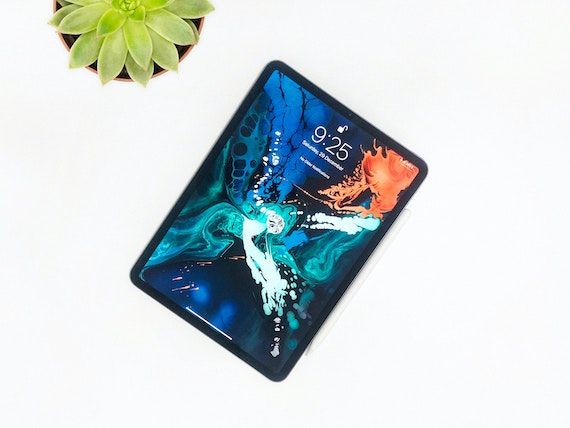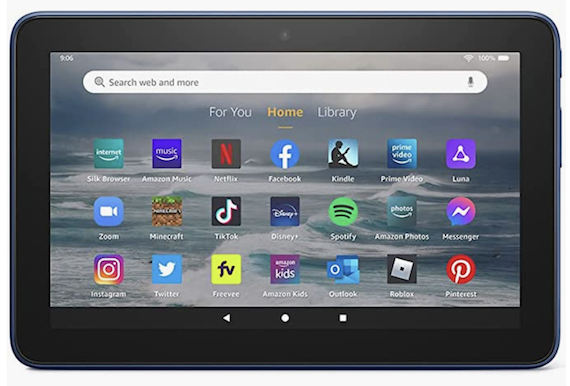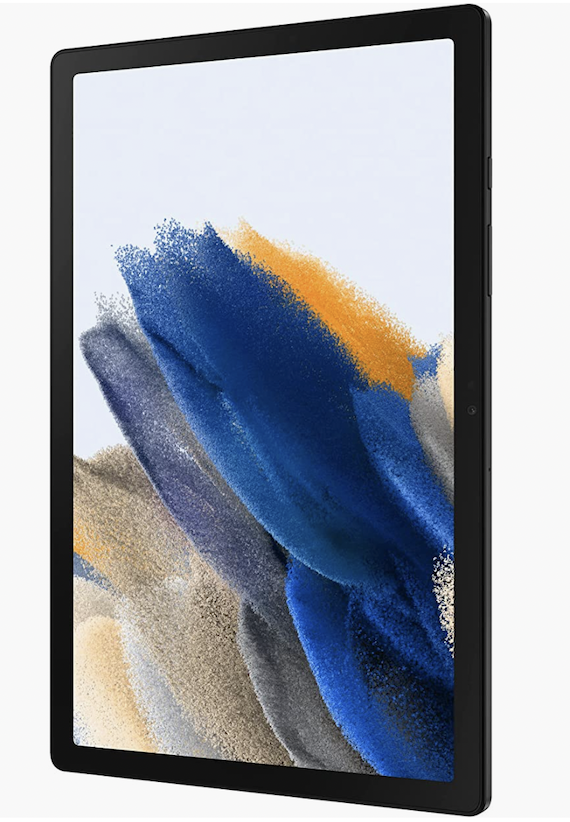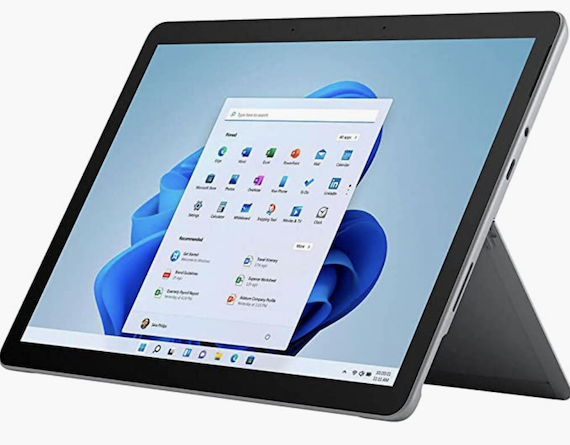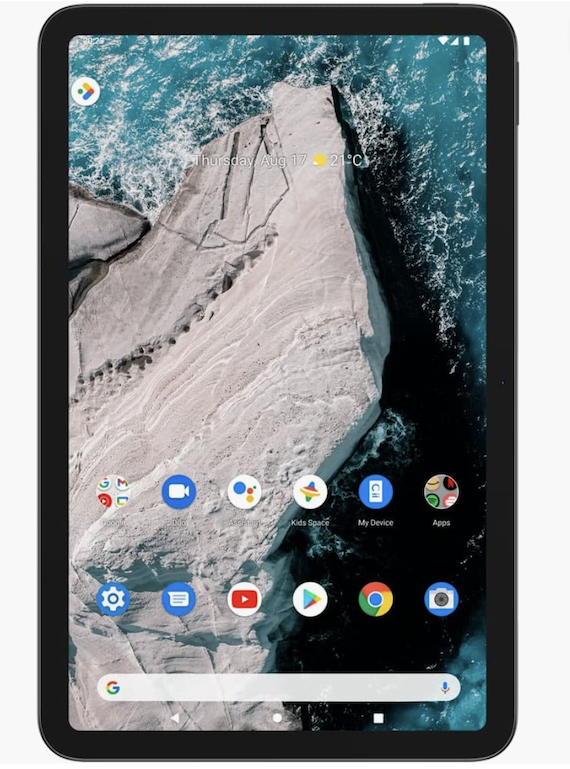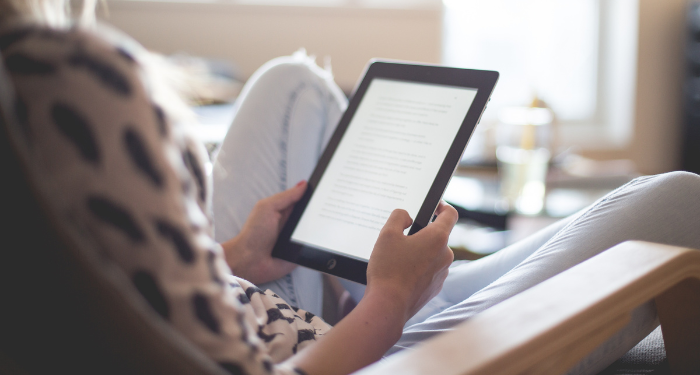
This content contains affiliate links. When you buy through these links, we may earn an affiliate commission.
When I first started reading digitally, back in the prehistoric days of 2010, I loved how light my ereader was and that I could use it to read very long books without carrying around all that weight. I still love my Kindle for those reasons, but there are some drawbacks to a dedicated ereader (which mostly have to do with reading anything with illustrations), so some readers may prefer a tablet for reading if you are, for example, a heavy reader of comics and graphic novels. Hence, this examination of the best tablet for reading in 2022.
It can be difficult to figure out where to start since there are many options at various price points. Some tablets are primarily for designers (I would not suggest, for example, the iPad Pro if you’re just going to be reading on it) and ebook files tend to be fairly small so you don’t have to go all-out on a top-of-the-line tablet with maximum storage.
A lot of this is down to personal preference — are you an Apple user or an Android user? Are you already very tied into a Kindle library? Do you want to also be able to check your email on your tablet? (Really think about that one.) How long will this device last before you need to upgrade again? Read on to see what’s out there before you commit. And, once you get a cute new tablet for reading, make sure to deck it out in a bookish cover!
1. iPad & iPad mini
I feel like iPads are among the usual suspects when it comes to ereading. You can download all kinds of reading apps on them and are therefore not locked into Amazon’s ecosystem. The iPad 10 comes in a bunch of fun colors right now — like yellow! The iPad Mini, as its name implies, is smaller and will fit into one hand, so if you like the size of your Kindle Paperwhite, this might be an option to upgrade. The iPad 10 starts at $449 and the iPad Mini at $499.
One small caveat: you will need to use the iPad’s browser to download Kindle books, since Amazon doesn’t want to give Apple a cut of its profits for buying within the Amazon app.
2. Kindle Fire
I still think of the Kindle Fire as a Kindle reader that does other things, which is probably not what Amazon wants me to think. Kindles use the Fire OS, which is a version of the Android operating system. If you decide to stay within the Kindle ecosystem, keep in mind that Amazon has a trade-in program for your old devices that got me $30 off the last time I had to replace my Kindle (plus I didn’t have to add another device to the box of outdated electronics and miscellaneous cords in my home). The best-selling Fire model is the 7″ tablet which is on sale for $59.99 and offers 10 hours of reading time before needing to be recharged.
I recently purchased a Fire Kids tablet and it is pretty easy to use but I am a committed Apple user so there were some growing pains and grumbling as I figured out how to make the Disney+ app show up in the children’s section.
3. Kindle Paperwhite
There are a bunch of other versions of the “just books” Kindle, but I am very committed to my Kindle Paperwhite. I am on my second one and I will use it until the battery fails (which took at least five or six years with my last one) and then trade it in for another. When it’s time to get serious about reading something, out comes the Paperwhite.
I did recently run into an issue where I tried to connect to hotel wifi and the (somehow still) experimental browser pulled up the hotel’s login page in what appeared to be an infernal language, but I rarely need to download anything outside of my own home. It’s about as bare-bones as you can get. The battery lasts for weeks rather than hours. I have the ad-supported version, which I also love because it shows me the latest in werewolf romance, or toilet paper, or occasionally a picture of what I thought were oboes but were actually pens. You also have the option to get it ad-free for slightly more money and see the cover of the book you’re reading in stunning black-and-white.
4. Samsung Galaxy
If you are an Android user, you might be after a Galaxy tablet to remain in that ecosystem. The Galaxy uses the Google Play bookstore by default but you can also use Kindle, Nook, or any other reading app that is available to Android users. This well-reviewed device offers up to 128 GB of storage and is light and easy to carry around, if you’re reading on the go. Reviews state that the base model Galaxy tablet performs better than a Kindle Fire when it comes to things like videos and games, which may not be a consideration if you’re just looking for a place to store your ebooks.
5. Surface
The Microsoft Surface is compatible with all of the usual suspects, as far as reading apps go. It may be tricker to access something like Libby (the Libby website advises you to go to a web address instead of an app) but you can definitely download other reading apps like Nook or Kindle. Reviews online suggest that the battery life is not as good as that of an iPad or Kindle. The price point is somewhat in the middle of the pack here, less expensive than an iPad but more expensive than your standard Kindle. There are a bunch of versions of the Surface tablet including a more expensive “Pro” version that is probably more than you need for reading ebooks.
6. Nokia T20
I have never seen one of these in the wild but it’s an affordable option for a reading tablet. This 10.4 inch tablet has a low blue light certification and runs on the Android platform. It promises a battery that will stand up to 15 hours of online browsing. It has less internal storage than an iPad but I’ve never even wondered how much storage my Kindle has so you’d probably be OK. It is currently on sale for $179.99.
The original Nook is also still available, if that’s something that appeals to you but I don’t know how long it’s going to be around (there’s even a tablet version now). It may end up like that Sony ereader I had in the late-2000s, the one that took a full minute to load a page and could only really display PDFs.

